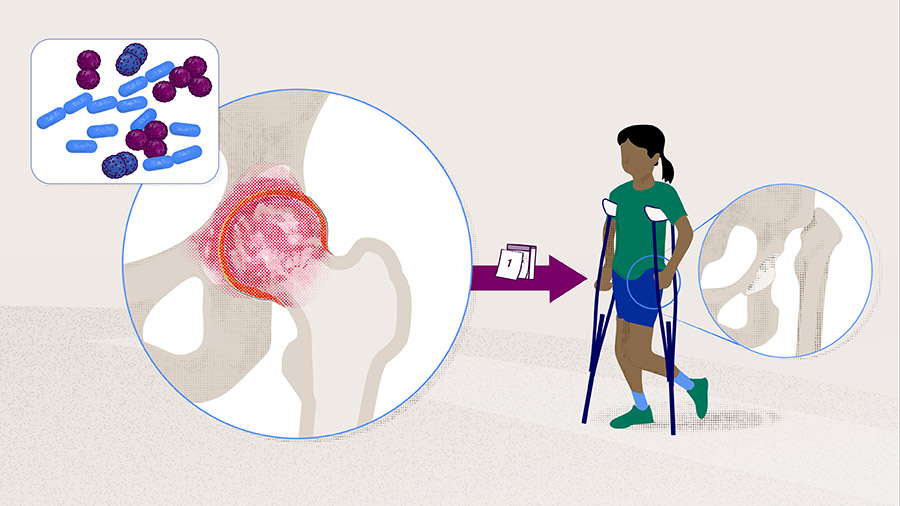Total hip arthroplasty in patients with skeletal dysplasia
Preview
Read the full article with your AO login
- Radiographic features
- Surgical challenges of total hip arthroplasty in skeletal dysplastic patients
- Modular stems: why?
- Controversies over modular stems: the neck-stem junction
- Current clinical outcomes
- Conclusion
Additional AO resources
Access videos, tools, and other assets.
- Videos
- Upcoming events: AO Recon Course finder
Contributing experts
This series of articles was created with the support of the following specialists (in alphabetical order):

Seung Beom Han
Department of Orthopedics
Korea University Medical Center
Seoul, South Korea

Seung-Jae Lim
Department of Orthopedic Surgery
Samsung Medical Center
Seoul, South Korea

Youn-Soo Park
AO Recon Education Forum
Department of Orthopedic Surgery
Samsung Medical Center
Seoul, South Korea
This issue was written by Maio Chen, AO Innovation Translation Center, Clinical Science, Switzerland.
References
- Krakow D, Rimoin DL. The skeletal dysplasias. Genetics in Medicine. 2010 2010/06/01/;12(6):327–341.
- Sekundiak TD. Total hip arthroplasty in patients with dwarfism. Orthopedics. 2005 Sep;28(9 Suppl):s1075–1078.
- Saleem S, Anwar A, Iftikhar PM, et al. Spondyloepiphyseal Dysplasia Congenita: A Rare Cause of Respiratory Distress. Cureus. 2019 Jul 8;11(7):e5101.
- Guenther D, Kendoff D, Omar M, et al. Total Hip Arthroplasty in Patients with Skeletal Dysplasia. J Arthroplasty. 2015 Sep;30(9):1574–1576.
- Vanlommel J, Vanlommel L, Molenaers B, et al. Hybrid total hip arthroplasty for multiple epiphyseal dysplasia. Orthop Traumatol Surg Res. 2018 May;104(3):301–305.
- Patel H, Cichos KH, Moon AS, et al. Patients with musculoskeletal dysplasia undergoing total joint arthroplasty are at increased risk of surgical site Infection. Orthop Traumatol Surg Res. 2019 Nov;105(7):1297–1301.
- Treble N, Jensen F, Bankier A, et al. Development of the hip in multiple epiphyseal dysplasia. Natural history and susceptibility to premature osteoarthritis. The Journal of Bone & Joint Surgery British Volume. 1990;72-B(6):1061–1064.
- Anis HK, McConaghy KM, Charles RJ, et al. Perioperative Outcomes and Complications After Primary Total Hip Arthroplasty in Patients With Disproportionately Short Stature: A Matched Cohort Analysis. J Arthroplasty. 2020 Mar;35(3):801–804.
- Chiavetta JB, Parvizi J, Shaughnessy WJ, et al. Total Hip Arthroplasty in Patients with Dwarfism. JBJS. 2004;86(2).
- Wyles CC, Panos JA, Houdek MT, et al. Total Hip Arthroplasty Reduces Pain and Improves Function in Patients With Spondyloepiphyseal Dysplasia: A Long-Term Outcome Study of 50 Cases. J Arthroplasty. 2019 Mar;34(3):517–521.
- Lim SJ, Park YS, Moon YW, et al. Modular cementless total hip arthroplasty for multiple epiphyseal dysplasia. J Arthroplasty. 2009 Jan;24(1):77–82.
- Park C-W, Lim S-J, Park Y-S. Modular Stems: Advantages and Current Role in Primary Total Hip Arthroplasty. Hip Pelvis. 2018 9/;30(3):147–155.
- Zajc J, Moličnik A, Fokter SK. Dual Modular Titanium Alloy Femoral Stem Failure Mechanisms and Suggested Clinical Approaches. Materials (Basel). 2021 Jun 4;14(11).
- Mertl P, Dehl M. Femoral stem modularity. Orthopaedics & Traumatology: Surgery & Research. 2020 2020/02/01/;106(1, Supplement):S35–S42.
- Solarino G, Vicenti G, Carrozzo M, et al. Modular neck stems in total hip arthroplasty: current concepts. EFORT Open Rev. 2021 Sep;6(9):751–758.
- AOANJRR. Australian Orthopaedic Association National Joint Replacement Registry (AOANJRR). Hip, Knee & Shoulder Arthroplasty: 2019 Annual Report 2019. Available from: https://aoanjrr.sahmri.com/annual-reports-2019.
- Modi RM, Kheir MM, Tan TL, et al. Survivorship and Complications of Total Hip Arthroplasty in Patients with Dwarfism. HIP International. 2017 2017/09/01;27(5):460–464.




